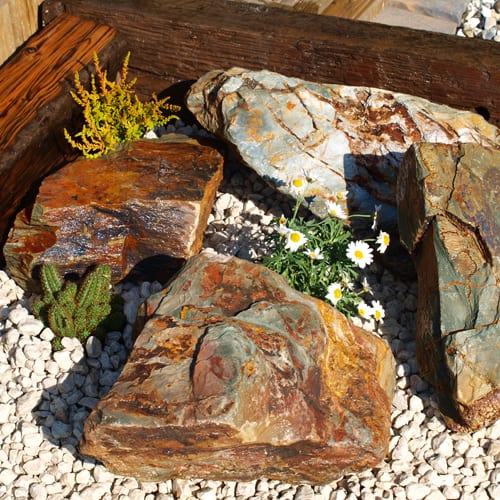
Going Alpine in the Garden
There is this myth that planting and growing alpine plants is very difficult but here at Deco-Pak, we would like to put a stop to this talk all together!
Especially in this heat wave that is going on, there are many benefits to starting an alpine garden:
- Most alpine plants prefer good levels of sunshine
- They are low maintenance and drought tolerant
- Alpine gardens look authentic and can be enjoyed throughout the year
- Can provide diversity to your garden with different types of rocks and gravel
- Require fewer plants to make a garden look “full”
- They look great in gardens of all sizes
Where to place your alpine plants
Choose a place where the plants can receive the most sun possible throughout the day and remember it is always better for the plants to spend a few hours in full sun than remain shaded all day. If you want to introduce some shade loving varieties, these can be planted in shady areas provided by the rocks in your display.
It is essential that alpine plants have great water drainage so choose a spot on a slope or artificially create one. Alternately you can use a raised bed.
It is recommended to draw out a plan of what you want your garden to look like before you actually start so you can bear in mind any factors that will interfere with the health of your plants.
Planting
When planting, remember to allow for a plants height and spread as giving them enough room to grow is crucial.
A basic planting mix would be:
- One part Chelsea topsoil (sterilised)
- One part Chelsea Horticultural Alpine Grit
- One part Chelsea Multi-purpose compost or Ericaceous compost for lime-hating plants.
Remember to adjust these for individual plant requirements!
Top-dressing the plants with a layer of gravel will help reduce evaporation and deter slugs and snails, this is essential for both Rock gardens and potted displays such as sink gardens.
Tips
- Placing decorative grit around plants reduces evaporation and also deters slugs and snails from feasting.
- To avoid rotting, ensure that there is plenty of drainage and integrate Chelsea Garden Horticultural Grit into the soil.
- Choosing a range of rock sizes will keep your alpine garden looking as authentic as possible. Starting with a keystone (larger rock) and then placing the smaller rocks around it will help keep the authenticity.
Want more tips and tricks? Contact us on Twitter or even ring us for a chat on 01422 204 394

